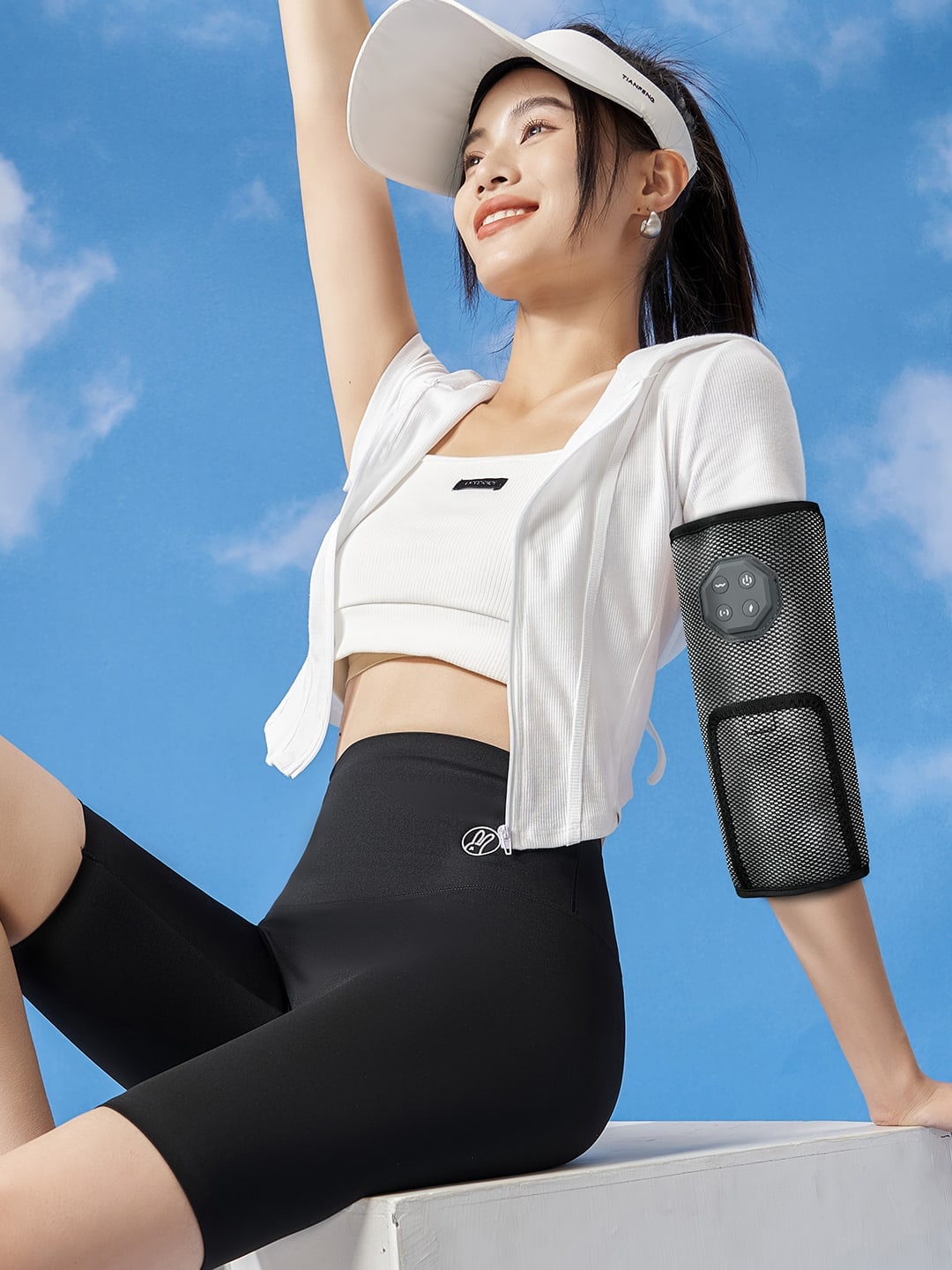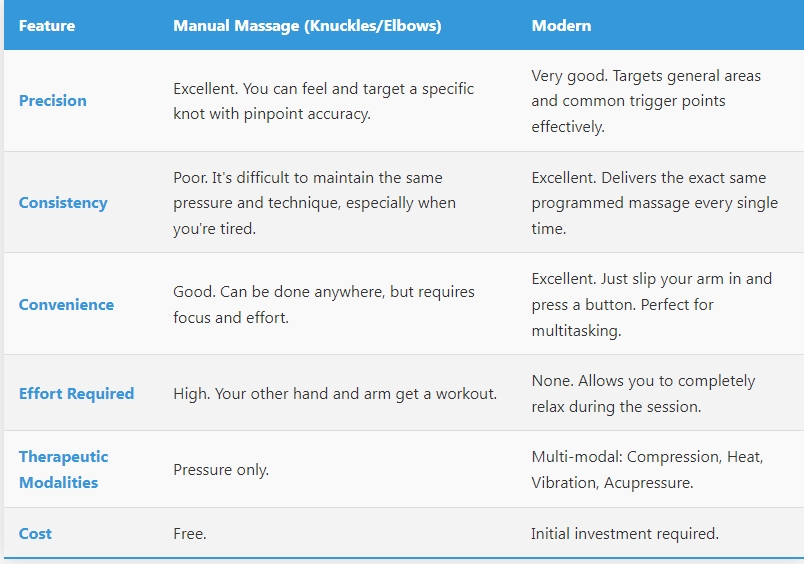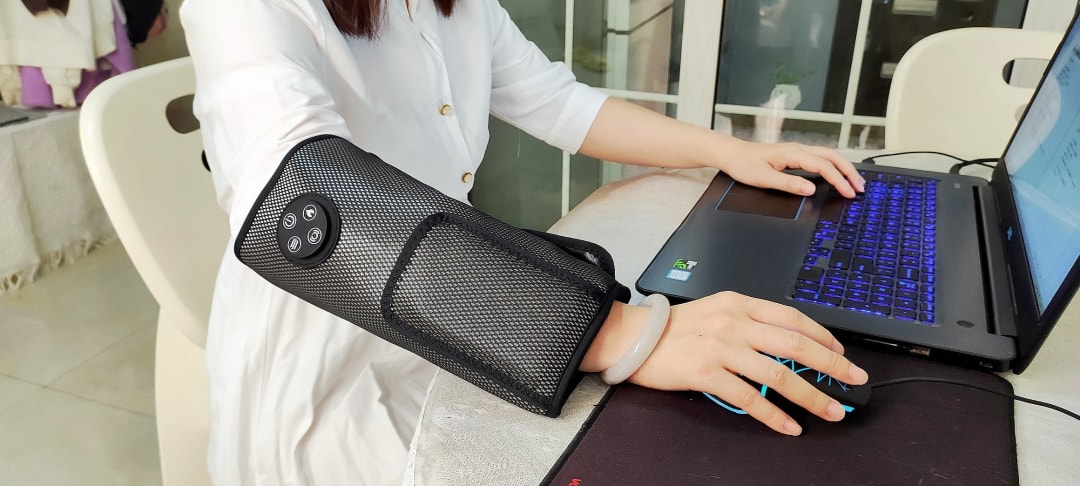The Best Forearm Massage Technique: A Showdown for Your Arm Massager
- By Grace
- Updated on
That deep, burning ache in your forearms after a heavy lifting session or a long climbing route... sound familiar? As a fitness enthusiast, you push your limits, and your forearms often pay the price. This leads us to a crucial recovery question: what’s the best way to soothe those screaming muscles? It's an age-old debate pitting traditional, hands-on massage against the power of a modern arm massager. Let's break it down and find the champion for your recovery routine.
What’s Really Happening in Your Aching Forearms?
Before we pick a side, let's get personal with your anatomy. When you put your forearms through a grueling workout—whether it’s gripping a barbell, a tennis racket, or a rock face—you’re creating microscopic tears in the muscle fibers. This is a good thing! It’s how muscles grow stronger. However, it also triggers an inflammatory response, leading to that all-too-familiar delayed onset muscle soreness (DOMS). This is the "good pain" we learn to live with.
But there's more to it. Your muscles are wrapped in a web of connective tissue called fascia. Think of it like the cling film that encases and connects everything. When overworked, this fascia can become tight and develop adhesions, or "knots." These trigger points are not just sore to the touch; they can restrict movement and refer pain elsewhere. So, when we talk about forearm massage, we're not just trying to feel good; we are actively trying to speed up repair, flush out metabolic waste, and release these fascial restrictions. This is a really, really important distinction.
The Old School Method: The Power of Manual Massage
This is the classic approach, the one that’s been around for centuries. Using your own knuckles, thumbs, or even elbows to dig into the forearm flexors and extensors is the foundation of deep-tissue massage. The primary benefit here is tactile feedback. You can feel the exact spot where the tension is highest, the precise location of that stubborn knot, and adjust your pressure in real-time. It's an intuitive, focused approach.
The science behind it is fascinating. Applying direct, sustained pressure helps to break down those fascial adhesions I mentioned. This process, known as mechanotransduction, is how your cells convert mechanical stimuli into a chemical response, promoting tissue repair and reducing stiffness. It’s effective, requires no equipment, and can be done anywhere. However, let’s be honest: trying to give yourself a truly deep forearm massage is tiring. Your "massaging" hand often gets as fatigued as the one you're working on, leading to inconsistent pressure and, frankly, you giving up too soon.
The Game-Changer: How Modern arm massagers Work
Enter Perspective 2: the technology-driven solution. A high-quality arm massager isn't just a vibrating gadget; it's an intelligent recovery tool designed to overcome the limitations of manual massage. These devices use a combination of therapeutic modalities to tackle muscle soreness from multiple angles. Instead of just pressing, they offer a comprehensive treatment that you simply can't replicate with your own two hands.
Let's look at the common features and why they are game-changers for recovery:
- Air Compression: This feels like a wave of pressure moving up and down your arm. Functionally, it mimics the long, sweeping strokes of a massage (effleurage) which is fantastic for boosting blood flow and helping with lymphatic drainage. Think of it as systematically pushing out the old metabolic waste and inviting in fresh, oxygenated blood. It provides relief much like arm compression sleeves, but with active, dynamic pressure.
- Targeted Acupressure: Many devices have internal nodes that press on key trigger points, delivering consistent and deep pressure without you needing to exert any effort.
- Soothing Heat: Applying heat (thermotherapy) increases blood circulation through vasodilation—widening of the blood vessels. This not only feels incredible on sore muscles but also makes the tissue more pliable and receptive to massage.
- Vibration Therapy: Vibration can help to "distract" the nervous system from pain signals (a concept called Pain Gate Theory) while also helping to relax tight muscles on a deeper level.

The Ultimate Showdown: Manual vs. Machine for Peak Performance
So, which one should you choose? It's not always about one being "better," but about which is better for *you* and your goals. Both have their place in an athlete's toolkit. To make it simple, I’ve put together a head-to-head comparison to help you decide where to invest your time and energy for recovery.

How to Use Your Chosen Technique Effectively
No matter which path you choose, proper technique is key to getting results and avoiding injury. You can’t just mash away at your muscles and hope for the best. A smart approach will always yield better, faster results.
If you're going the manual route, warm up the tissue first with some light, general strokes. Use a bit of lotion to reduce friction. When you find a trigger point, apply sustained pressure for 30-60 seconds—don't just rub it aggressively. Remember to breathe! For those hard-to-reach spots, try pinning a lacrosse ball between your forearm and a wall. However, be mindful not to press on nerves; if you feel tingling or numbness, back off immediately. Simple arm sleeves can offer some compression, but won't provide the deep tissue release you're looking for.
If you invest in a quality arm massager, the process is much simpler but still benefits from a smart approach. Start with a lower intensity setting to see how your body responds. A 15-minute session post-workout is a fantastic starting point. Don't think of it as a replacement for a proper warm-up or cool-down, but as a powerful supplement to them. A dedicated massager is far more therapeutic than a generic arm brace, which is designed for support, not active recovery. Consistency is the secret ingredient to recovery, and that's where technology often wins.

Conclusion: The Best Technique is the One You'll Actually Use
So, what's the verdict? While manual massage has its place for its precision and cost-effectiveness, the limitations of fatigue and inconsistency are significant for a dedicated fitness enthusiast. For reliable, deep, and multi-faceted recovery, a modern arm massager is a clear winner. It takes the effort and guesswork out of the equation, providing a consistent, therapeutic session every single time.
Think of it as an investment in your performance. By improving your recovery, you reduce downtime, lower your risk of overuse injuries, and ensure you're ready to go all-out in your next session. For the athlete looking for a reliable, on-demand recovery solution, a high-quality arm massager isn't a luxury—it's a true game-changer for your training.
Frequently Asked Questions (FAQ)
Do arm massagers help with muscle pain and soreness in the arms?
Absolutely. A good arm massager is specifically designed for this. By using a combination of compression, vibration, and heat, it helps to increase blood flow to the muscles. This enhanced circulation delivers more oxygen and nutrients for repair while simultaneously helping to flush out the metabolic byproducts that cause soreness, like lactic acid. The result is faster recovery and reduced muscle pain.
Can an arm massager improve blood circulation in my hands and arms?
Yes, significantly. The compression feature in most modern arm massagers acts like a pump, systematically squeezing and releasing the muscles. This action encourages blood to move more efficiently through the vessels in your arms and all the way to your fingertips. Improved circulation not only aids muscle recovery but can also help with feelings of coldness or stiffness in the hands.
Are arm massagers good for carpal tunnel syndrome?
This is a great question that requires a careful answer. Carpal tunnel syndrome is a medical condition caused by pressure on the median nerve. While an arm massager can help alleviate some of the symptoms by relaxing the tight forearm muscles and tendons that contribute to this pressure, it is not a cure. The gentle massage and heat can provide temporary relief from the aching and stiffness. However, if you suspect you have carpal tunnel syndrome, it is crucial to consult with a doctor or physical therapist for a proper diagnosis and treatment plan. They can advise if using a massager is appropriate for your specific situation. The same advice applies to anyone seeking an arm massage for lymphedema; this requires professional medical guidance.




